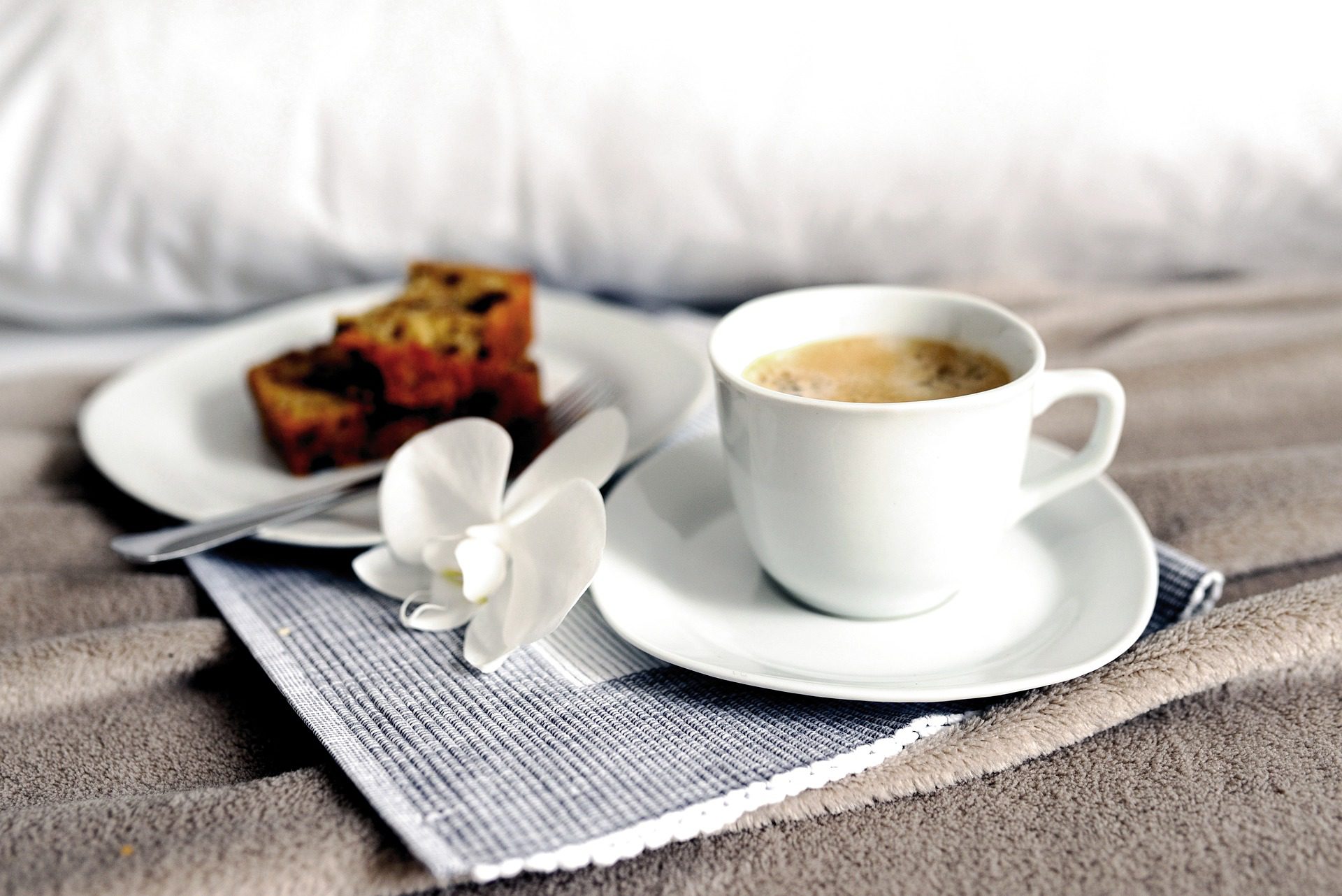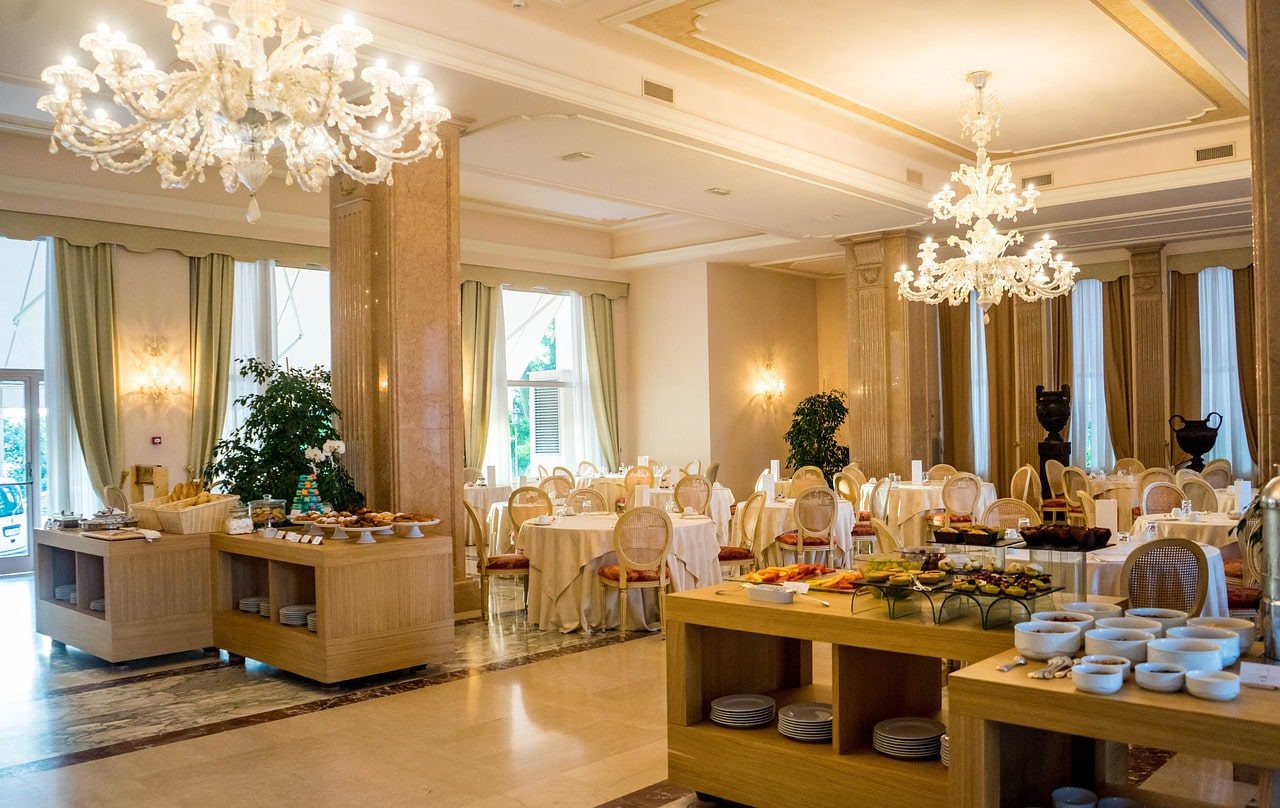

Breakfast is an important part of the overall experience of your guests’ stay at your hotel and it’s another way you can ‘wow’ them and set yourself apart from your competition.
Not only does your breakfast set your guests up for their day but, on the day of their checkout, breakfast is likely to be one of their final touchpoints with you and can leave a lasting impression.
What are the most popular types of breakfast?
English Breakfast
An English breakfast, also known as a Full English or a fry-up, is a hearty meal consisting of sausages, bacon, fried eggs, mushrooms, beans, a cooked tomato and toast. It may also contain fried bread or black pudding.
Continental Breakfast
A continental breakfast is a lighter way to start the day and can be traced back to the mid-19th century. Instead of meats and fried foods, a continental breakfast typically contains pastries and other baked goods alongside fruit, toast and coffee. It’s not uncommon to see yoghurt amidst a continental spread.
American Breakfast
An American breakfast shares some similarities with the English breakfast in that it features eggs, sausages and bacon, but may also include pancakes or hash browns.
Regional Breakfast
If your guests typically travel from further afield, such as overseas, they may be looking forward to trying local delicacies. Offering a range of foods that use local ingredients or recipes can be the deciding factor for some guests.
Ways to serve hotel breakfasts
How you serve breakfast can be as important as what you serve. Some guests may be expecting full table service with a number of courses while others would prefer to serve themselves so they can choose exactly what they want and not wait for their food to arrive, and some may prefer to skip the dining room completely and have their breakfast brought to their room.
Buffet Breakfast
A buffet breakfast allows your guests to choose exactly what they want and it also often means they have to wait for less time.
Having your guests serve themselves means your staff are free to do other things, which may include ensuring your guests are happy and satisfied, keeping an eye on the food levels, and clearing empty tables.
A la carte
Some guests may prefer a meal that has been cooked specifically for them and brought to them once it is ready, rather than serving themselves food that has been kept warm for an undetermined amount of time. The guest can also ask their waiter for expert recommendations on the food.
A benefit to you as the hotel owner is that less food will be wasted by serving only what is ordered.
Room service
Some guests may prefer to eat in their rooms, for any number of reasons including illness, hangover, disability, social anxiety or they may just simply want to eat breakfast in bed. Offering room service requires additional time from your employees but provides a keener service to your guests for which you may choose to charge a premium.
How to make your breakfast top-notch
Food safety regulations
Paying attention to all food safety regulations is important for your guests – not to mention your reputation! On top of the regular food safety regulations used in your kitchens, you and your staff should do the following to keep your buffet areas hygienic:
- Keep food covered until it’s ready to serve
- Provide separate serving utensils for every dish to avoid cross-contamination
- Dispose of food after 2 hours at room temperature (and after 1 hour on hot summer days)
- Clean the buffet area before, during and after serving times
- Consider a sneezeguard
- Provide handwashing options for guests before they start touching the serving utensils
Pay attention to details and aesthetics
You’ll want to make sure your food is served in a way that appeals to your guests, and your serving dishes and utensils should be in keeping with your hotel’s brand aesthetic.
Clear labelling
Labelling your food clearly and simply is not only helpful for people who may not be familiar with a particular dish, but it can help people with allergies or severe dislikes avoid foods that may not agree with them. It can also tell people who try that food and enjoy it exactly what they’re eating so they can order it again in the future.
It’s a good idea to include any allergens on the label. For more information about your legal requirements around allergen information, read here.
Group similar foods together
Grouping food together means your guests can find what they want to eat more easily. For example, they may know they want cereal but haven’t quite decided what kind of cereal they’d like that morning, so having it all together helps them see all the options at once and they can make their decision more easily. It also means you can group the cereal bowls and milk together for easy serving.
Having a section for pastries, a section for cereals and a section for hot food means people can go directly to the area that interests them.
Decide what food items need to be served individually and what can be served in bulk
Some foods, such as baked beans, make sense to be served in bulk; it makes it easier for the kitchen staff to prepare and guests can take as much or as little as they like.
Other food items are better off being presented as individual portions. For example, you could serve a block of butter and have people serve themselves but it would quickly look unappealing.
Some items, such as cereal, may be served either way, but you’d need to consider how you present them. If serving cereal in bulk, you’ll need to use particular dispensers that will stop the cereal from going stale. Alternatively, you can serve individual packets of cereal.
Pay attention to your diners’ surroundings
Depending on the size of your hotel, your guests may eat breakfast in the same room as they eat their dinner, and it’s nice to create a different atmosphere so they’re not reminded of their lasagne al forno at 8am.
Using different tablecloths and bright flowers can help to create a different kind of ambience, alongside the smell of fresh coffee and some soft but lively music. You may have more subdued lighting for dinner but opt for brighter lighting in the morning. Combining these subtle touches can give the same room a completely different vibe.
How do you set up a breakfast buffet table?
Firstly, you need to decide where your table will be going. Will you have it in the middle of the room so it is central to everybody, or over to one side? If it’s near a wall, will you keep it out a few feet so people can serve themselves from both sides, or will you have it up against the wall?
Once you’ve placed your table, you can dress it. You may opt for a large tablecloth or smaller, individual mats under each serving station, you may even choose both. Many hotels choose white tablecloths, however, you may prefer a checked tablecloth, or floral, or bold, bright patterns. How you dress your table, including the colours, materials and any decorations, should reflect the aesthetic of your hotel’s brand.
Now you can begin to lay your table. You should provide plates at the “start” of your buffet table so your guests can pick these up first, alongside napkins and cutlery. You may choose to roll cutlery into napkins so guests can easily pick up one bundle.
Because hot food will start to cool once it’s on your guests’ plates, it is better to have cooked items near the end of the serving selection, so after the plates and cutlery should come your cold offering, which may include cereal (as well as cereal bowls and milk), fruit (either individual fruit or a fruit salad in a large serving bowl) and pastries. Fill your serving dishes so people know there is enough for everyone and make sure everything has its own serving utensil.
After your cold food comes the hot food, and you’ll need to make sure that it stays hot – nobody wants cold scrambled eggs. Lay out your chafing dishes with enough space between/around them so that people have space to put the lids while they are serving their food. Try to group similar hot foods together, such as meats, then eggs, then potatoes.
You’ll also want a drinks station and ideally, this will be slightly separate from the food; perhaps at the end of the buffet table, or on a different table. Here you’ll have your tea and coffee kept warm in dispensers, as well as cold fruit juice (orange and apple are standard). The rest of your drinks section should include cups, glasses, saucers, sugar, milk and teaspoons.
If you’re considering buying your own hotel, get in touch with a member of our skilled and experienced team who are on hand to help you discover your dream hotel.



